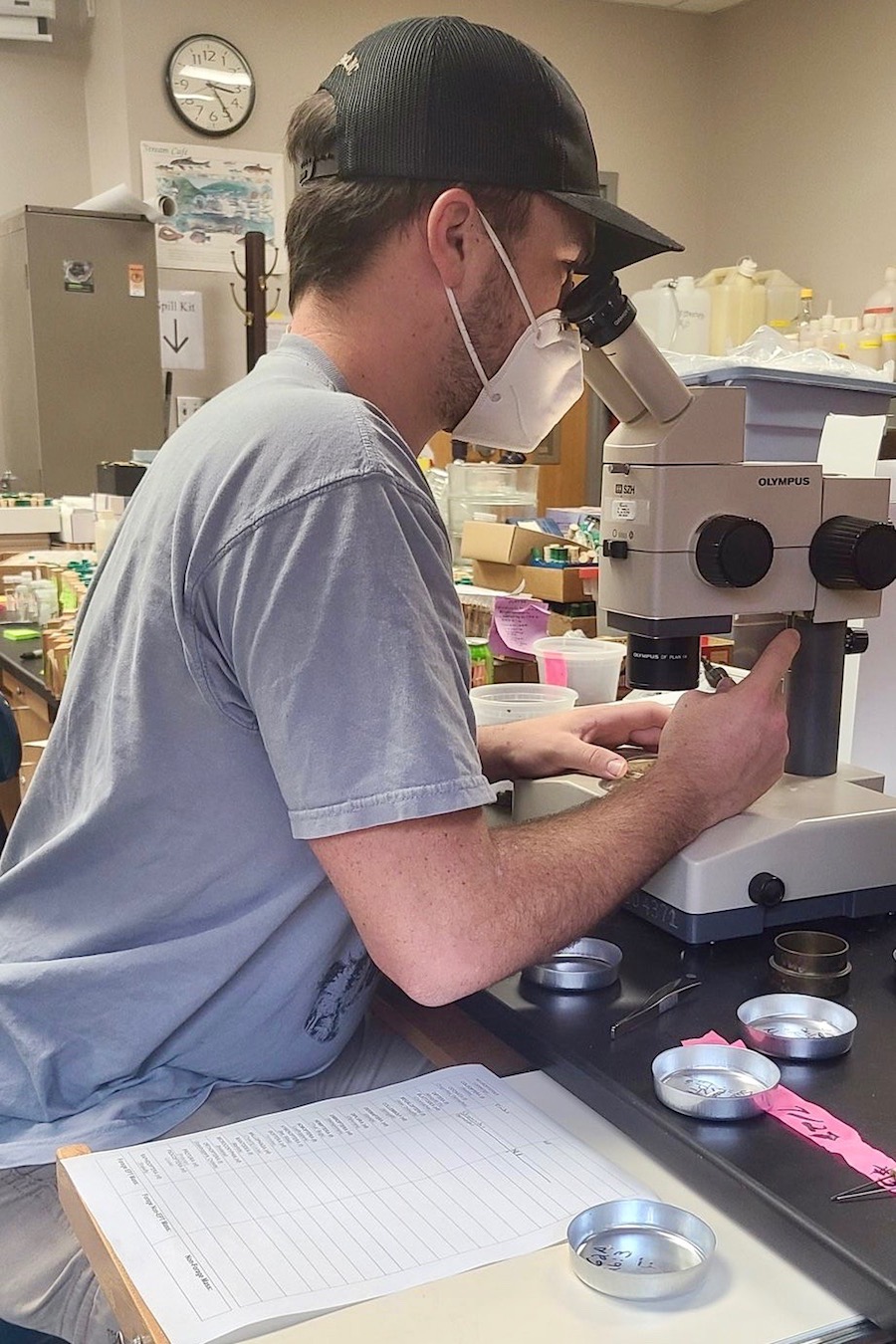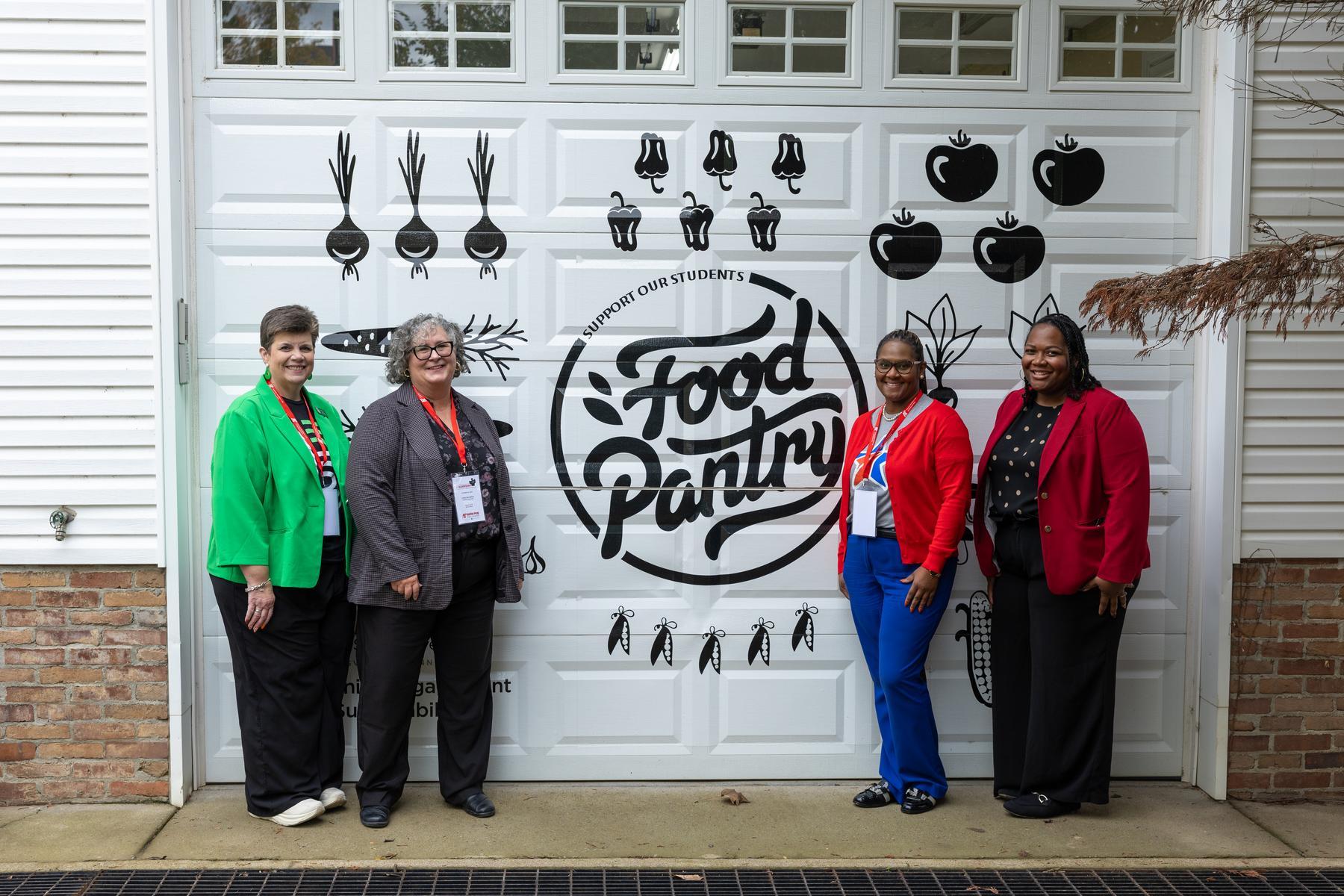Austin Peay graduate student identifies 55,085 insects during research on Fort Campbell bats
(Posted on Monday, April 25, 2022)
When he first set the traps along creeks at Fort Campbell, Trevor Walker never expected he’d catch, pick through and identify so many bugs.
“Starting out, I was thinking maybe 10,000,” said the Maiden, North Carolina, native pursuing a Master of Science in Biology at Austin Peay State University. “But the number kept climbing and climbing and climbing.”
After about five months of collecting insects and six months of counting them in an Austin Peay lab, Walker and his team identified 55,085 bugs.
That’s right – he and his team captured and counted more than 55,000 insects in just 11 months. But the payoff for all of that work could be huge – the research could uncover a new way for state agencies to gauge water quality.
Why identify 55,085 bugs?

Walker’s work focused on three specific insect groups – mayflies, stoneflies and caddisflies – to see if they frequented the same areas as certain bats.
“The reason we focus on these insects is that previous studies have shown that these three orders are super intolerant to pollution in the water,” Walker said. “So, if a stream becomes polluted in any way, shape or form, these are going to be your first group of insects to disappear.
“They’re the first sign that something’s not right.”
State agencies already track mayflies, stoneflies and caddisflies to gauge water quality, and Walker wants to see if they can use bats in the same way.
“Previous studies show that bats focus on areas that have high insect biomass – a lot of insects equals a lot of bats,” Walker said. “But no one has looked at what these insects are.”
If bats feast on the same insects that state agencies use to determine water quality, then “we could suggest that bats can be used as a bio-indicator of water quality as well.”
Walker relates the idea in a research paper titled “Bat Species Diversity Linked with Stream Health as Described by Intolerant Insect Diversity.”
“Due to the reliance of North American bat species on aquatic insects for forage, we suspect there should be a link between stream health and metrics of bat diversity,” he wrote.
What can 55,085 bugs tell us?

Walker and his adviser, Dr. Catherine Haase, examined the data this spring.
“He looked at species richness – which is the number of species out there – and ‘evenness’ – whether a bat species is evenly represented,” Haase said. “Between these two metrics, he looked at the actual species of bat.”
The team collected insects using Hess samplers, kick nets, dip nets and light traps. They collected bats using mist nets at 25 Fort Campbell sampling locations. Big brown bats and red bats are common and were the most captured in the study, Haase said. Tricolored bats are endangered and less common.
Walker shared the findings in his paper: “We found that bat species richness and bat species evenness had a positive response to (mayfly, stonefly and caddisfly) family richness. But individual bat species key in on other habitat characteristics, such as food availability, weather conditions, and other temporal characteristics when foraging in these areas.”
The results indicate that bat species diversity is linked to healthy streams where mayflies, stoneflies and caddisflies are present.
Understanding our ecosystems
Identifying these sorts of relationships is key to advancing the understanding of our ecosystems, Walker said.
“It’s really important to understand these community relationships because bats do a lot for us,” he said. “I wanted to look at this and incorporate the insects too because I want to wrap in stream conservation, bat conservation and insect conservation altogether because everybody just kind of assumes that insects are always going to be around.”
As Walker tightens his research, he hopes the findings will help state agencies do their work. Bats are easier to identify, after all.
“Maybe state agencies could go out and set up an acoustic monitor or something like that, and if a species of bat is present, they’ll know that high-quality water exists,” Walker said.
Helping hands
Fellow Austin Peay graduate biology students Sarah Zirkle and Sarah Krueger will be co-authors of the paper along with Haase and Gene Zirkle, program manager and endangered species biologist for Fort Campbell Fish and Wildlife. The group has been working on a larger Austin Peay-Fort Campbell survey of endangered bats at the Army post.
Undergraduate Austin Peay biology students Matthew Scott and Harrison Rogers also helped Walker to identify the insects. Brylea Abed and Sheila Staples helped with data entry.
Walker will soon start at the South Carolina Department of Natural Resources as a lead bat technician.
News Feed
View All News
Participants connected with student volunteers, discussed potential internship programs, and learned about upcoming opportunities including the annual Peayple in the Community - Day of Service.
Read More
The Graduating Class Gift Campaign, established in 2018, helps support college-specific funds and essential student resources across campus.
Read More
The event, held in the Morgan University Center Ballroom, brought together students from Teaching as a Profession (TAP) programs across Middle Tennessee for a morning of hands-on activities, demonstrations, and networking opportunities.
Read More
